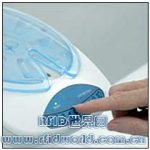
RFID equipment allows patients to obtain painkillers on their own
[ad_1]
Vanderbilt University professor Peter Buerhuas recently published a survey saying that the nation’s medical system is currently facing a shortage of medical staff, and this problem will worsen in the future; by 2025, a generation born in the baby boom era (78 million) When entering the aging period, the shortage of medical staff across the country will reach 500,000.
Avancen, a new medical equipment company in Florida, said that although they have developed a set of equipment that can not solve the shortage of personnel, it can alleviate the pressure on nurses and patients caused by personnel problems: painkiller management. When the operation is over, medical staff usually give intravenous injections to relieve the pain of the surgical patient.
Many of these intravenous injection devices include an automatic medicine dispensing system. When the patient’s last dose is used up, the medicine can be obtained by pressing the button (the device dispenses the medicine according to the pre-set dose and frequency).
But when the patient removes the intravenous injection equipment and starts to use oral painkillers, because the drugs are manually managed, this process often takes up a lot of valuable time for medical staff, and the patient has to wait for a long time to get the drugs. When Sharon Conley founded Avancen in 2004, he began to conceive of the company’s first product, Medication on Demand (MOD), a system that allows patients to obtain medicines through a bedside dispenser.
The workflow is as follows: After the medical staff remove the intravenous pain relief drip from the patient, each patient is assigned an RFID wristband. The wristband contains a passive 13.56 MHz RFID inlay that complies with the ISO 15693 standard. The wristband chip records the location code of the patient’s medical records (the hospital is used to track the patient’s medical records and drug prescriptions). After the nurse in charge of this patient receives the pain medicine (in the form of a sealed tray) from the hospital pharmacy, he puts the tray into the MOD, and the MOD integrates an RFID reader. Next, the nurse uses the Bluetooth communication connection between the MOD and a handheld or mobile computer to program the MOD. The software that runs on handheld or mobile computers is developed by Avancen.
“The software is very simple to use,” Conley said. “It will guide the nurse to write the number and frequency of the patient’s oral pills step by step.” The nurses are required to show their RFID card, which contains an ISO 15693 RFID chip, which can identify the nurse. After reading the card, the MOD opens automatically, allowing the nurse to remove the empty tray or reinsert a tray full of medicines.

Patient button indicates pain level

After indicating the pain level, bring the wristband closer to the MOD

MOD automatically distributes medicines
When the patient needs medicine, they bring the wristband close to the device and select a number on the smooth dial to represent the pain level (from 1 to 10), and the MOD will automatically dispense the medicine.
The patient’s RFID wristband is provided by Proximities. Proximities uses a patented design that integrates the antenna of the RFID chip into the pin of the wristband.
Once the wristband is put on the patient’s wrist, the only way to remove it is to cut the wristband and disconnect the inlay antenna from the chip. This ensures that other patients or medical staff cannot use the broken wristband to obtain the medicines in the MOD.
In 2006, the clinical trial results of MOD showed that 95% of patients believed that the device was easy to use and controlled their pain more effectively; 84% of nurses believed that MOD saved their time.
The price of a single set of MOD and software is $2,995, and the wristband and medicine tray are sold separately.
[ad_2]



